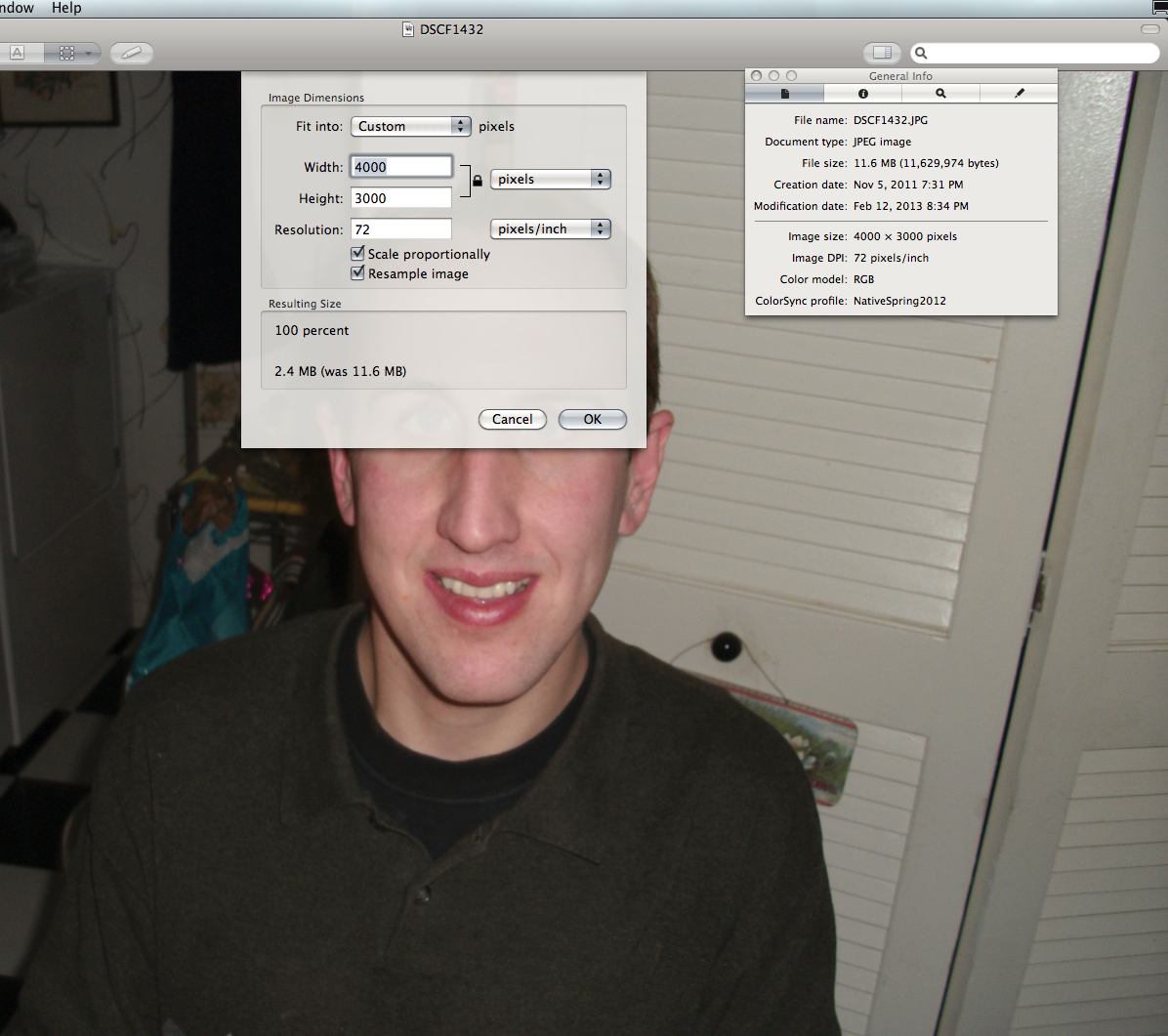Nov 01, 2009; 12:09 p.m.
DPI and PPI are used in digital printing alot. DPI is a many decades old term with scanning. It is used in our 35mm slide scanner of 1989; yes eighty nine. It is used in mid 1980's DOS scan wands; it is used in patents for FAX machines and formal Government specs on scanning documents.
IF somebody comes in my shop and says they scanned there 35mm slide at home on a flatbed at 2400 ppi; I know what they mean. IF a newbie Photoshop expert walks in and says all scanners are in PPI; I am not going to argue that he is wrong. He just read a newbie Photohop books dogma and believes it. I COULD mention that all but one of the digital scanners I have owned say "DPI" over the last 30 years; but folks have rigid mindsets; and love to ignore history. One can go back to late 1970's and early 1980's books and a dot and pixel are the same. BUT a pixel can be in math a hex layout like bees honeycomb; or a quad XY layout as we know today; if it is a 1930's scoreboard sign of thousand of bulbs.
In Farming farmers before we were all born used terms like poop; s---,manure, paddies; cow-chips for that stuff on the ground around cows. In Printing one often uses "DPI" around scanners; since that is about what EVERY scanner on the planets software uses. A farmer who sells 1 ton of manure and while loading it in the customers trucks says it is 1 ton of cowpaddies probably is not confused. Nor is a printer who uses dpi and ppi all the time; and has new customers on soap boxes declaring dpi is wrong for scanners. IF a new college grad PHd farm salesman lectures an old farmer about how his terms about cow paddies are wrong; the farmer just tags the salesman as a newbie; or troublemaker; or know-it-all that has zero experience.
What really matters is communication with ones clients.
IF you tell him he is all wrong; you probably lost the sale.
If he used the terms before you were born; it looks worse too.
Pixels are like dollars; more is better.
If somebody wants to pay you 500 dollars in CASH; normal folks do NOT get bogged down in the bills used. Sane folks would be happy with five 100's; or ten 50's; or twenty five 20's. In the deep South and around some gambling places 50's are considered unlucky; thus a dealer will not give back 50's in change. In images; dpi and ppi are abit like the size of bill. IF an editor wants a 720 pixel wide image for an advert; you give him at least a 720 pixel wide image. If he wants it tagged at 72 or 300; you do it. If you pay somebody 720 dollars in one dolar bills; they might get upset. If you give an editor 100 images and each is tagged at various dpi/ppi tags to be cute; you might get labeled as a troublemaker.
****IF an image is tagged at 240 and the client wants tagged at 300; this is an easy thing to do. You just the file in photoshop etc and keep the SAME number of pixels and save it with the new tag. Pleasing a client is really nothing new; a farmer selling eggs 300 years ago might have one customer who wants his buy in dozen crates; another by crates of 36 eggs. Customer #1 might buy 1 gross of eggs and want twelve cartons of a dozen eggs; customer #2 might want 1 gross packaged as four crates of 36 eggs per crate. How "stuff" we all buy is packaged is thousands of years old. Vendor who supply in weird unwanted units often die off or go broke.
****Editors and Farmers want suppliers who are HONEST. If an image is upsized and passed off as non upsized; the editor may be concerned. If you supply diluted bags of seed or fertilizer to a farmer as full strength; he might catch on. In either case of selling images or seeds; the buyer may prefer the way the product is packaged. If you supply images tagged at 72 or 240 and they want 300; but it is a rush job; let them know. If you supply seed in 10 Lb bags instead of 25 Lb bags; tell them why. It irrates a buyer to no end when folks purposely supply what they want in the wrong units. If you do this too much they will find another who listens.
Today the world is riddled with digital experts. It really is nothing new that a fine magazine wants a 300 ppi/dpi image at the actual size of the print in the magazine. This number is driven by the line screen of the printing. Printers *think* in inches; ie the peice of paper the actual reader is going in his/her hands. This is reality; ie a physical product is going to be on a newstand. Having at least 300 pixels per inch allows a great line screen. Giving them MORE allows cropping.
A painter might want to paint a wall that has 1000 square feet; and want 10 gallons of ACME paint; in one 5 gallon pail; plus five 1 gallon cans. He purposely requests one 5 gallon pails; so Kilroy can be using a roller or sprayer; and the small gallon cans for the trim painters on ladders. One could be a expert paint supplier and "show him" and send him forty 1 quart cans; or 10 on gallon cans; by NOT listening. One could also be a total jackass and supply him with 1/4 oz Testors model airplane paint bottles too After opening 5120 bottles of paint the buyer would have enough time to create fancy nicknames for you!

ILL inputs; MAY just make the other chaps job harder; and after awhile you get dumped as a supplier; who's brains is too full to listen.
Editors tire with the constant cost of dealing with digital inputs.The math is really not all that hard at all.
The number of pixels per inch required in printing depends on the application. National Geographic is higher than newspaper; which is higher than hockey dasher boards; which is higher than billboards. One has the physical size plus viewing distance too. Folks who print this stuff have a feel for what is required.
Whether selling eggs; seeds; manure; paint or images the buyer has reasons why they want the product packaged. The farmer grows tired constantly explaining what a dozen is; or what pounds or acres are. The painter will grow tired too if one has to be told what a gallon is; or a brush; ore a roller.
The editor grows tired too of explaining what pixels are; or dpi or ppi; or why they want a 300 ppi/dpi image. Real editors known hat they want; so do Farmers; Painters; and Carpenters too. A real carpenter in the USA probably knows what a 2x4 is in actual size; or what a worm drive saw looks like. Those who think printers and editors are confused about dpi and ppi and images probably also believe a farmer doesnt know what an acre or tractor is; or a carpenter a 2x4; or a painter what a gallon or brush is.
Part of being a successfull vendor is learning what client wants and understanding why; understanding the terms/words used to communicate. Folks new to any industry tend to coin new terms for the same old stuff and often embark on a crusade to educate the older established group on why they are all wrong. Many folks have jobs to do and do not have time for this petty monkey business.
IF one supplies up-sized images to a client; or diluted paint to a client; let the client know.




